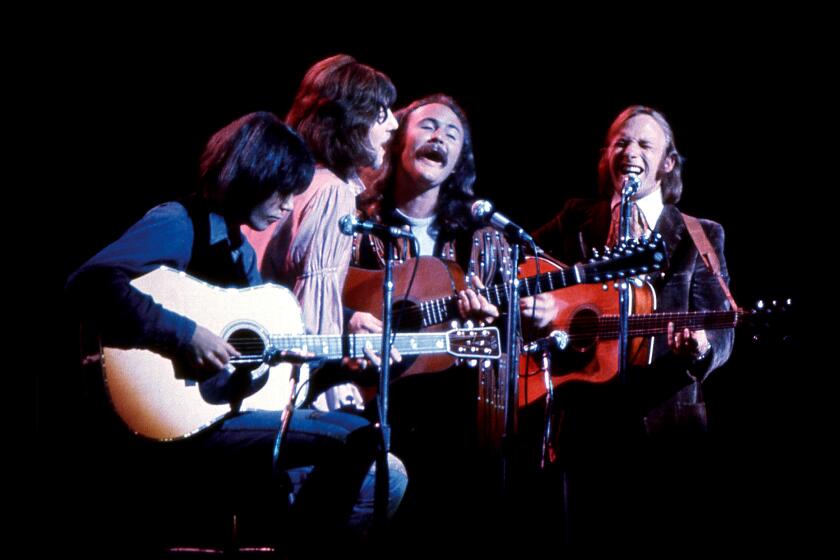Group Objects to Youth Mural Projects
- Share via
To some youth social service agencies, public mural projects are viewed as a constructive outlet for at-risk youths.
But members of a residents organization say the money spent on the murals by the Community Redevelopment Agency could be spent in better ways.
“Murals done as art are one thing,” said Mildred Weller, president of North Hollywood Concerned Citizens. “But murals done as a social exercise . . . is another.”
She cited a mural dedicated in October on Lankershim Boulevard as being one her group considers an “outrage.”
The mural was painted by 17 high school students enrolled in the nonprofit Ryman Program for Young Artists, a nonprofit program for aspiring artists, some of whom have criminal records or are deemed at risk of joining gangs.
It depicts brightly colored theater masks from various ethnic traditions against a blue sky.
“That’s not going to help the community,” Weller said. “Those kinds of things are probably appropriate for those kinds of people. But it’s not going to help revitalize a commercial area that’s been having serious financial problems.”
Lillian Berkenheim, who oversees North Hollywood projects for the CRA, dismissed Weller and other dissenters as “people who like to criticize.”
“I don’t really know how to reply to that,” Berkenheim said.
“The masks are multiethnic, and they don’t like it. . . . It’s much more costly to clean up after graffiti than to put up murals.”
The mural artists “don’t come in here and do negative things in the community,” Berkenheim added. “They come here and clean up.”
But Gary Hendrickson, a local anti-graffiti activist and elected member of the CRA’s Project Area Committee, agreed with the residents group.
He said it’s wrongheaded to give youths public space for an artistic project in hopes that they will not engage in graffiti painting.
“I don’t disagree with their needs,” he said. “But I disagree with making [mural painting] a reward. It’s like someone using a gun in a robbery and getting a job in a gun shop as a punishment.”
He also disliked the Lankershim mural, saying some of the artwork resembled gang insignias, with “voodoo-looking masks staring down at you in a threatening manner.”
More to Read
The biggest entertainment stories
Get our big stories about Hollywood, film, television, music, arts, culture and more right in your inbox as soon as they publish.
You may occasionally receive promotional content from the Los Angeles Times.










